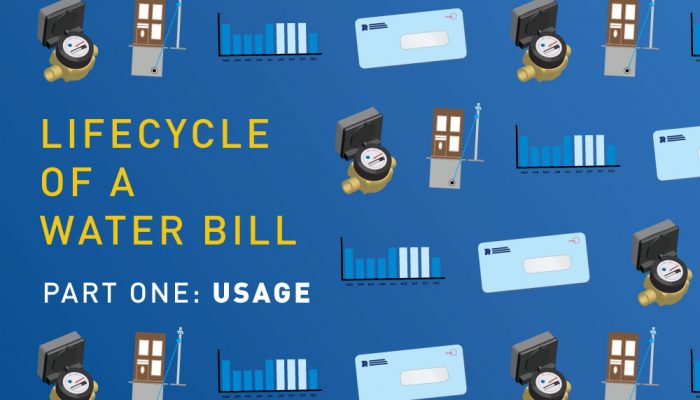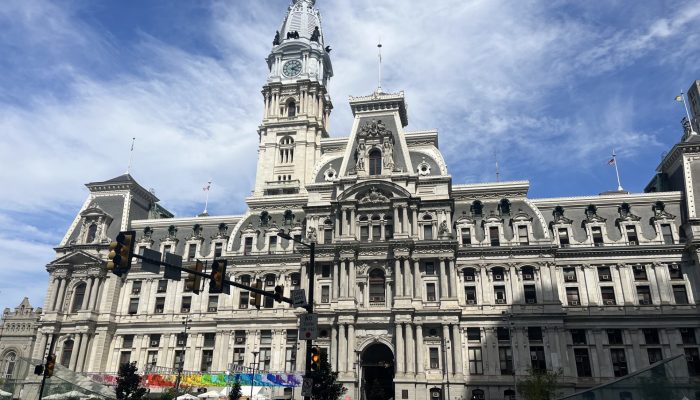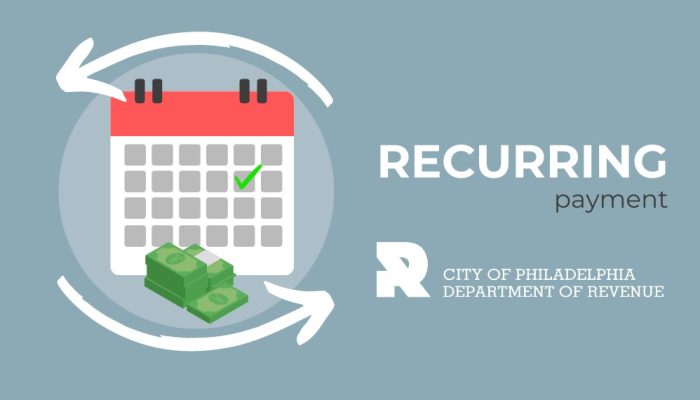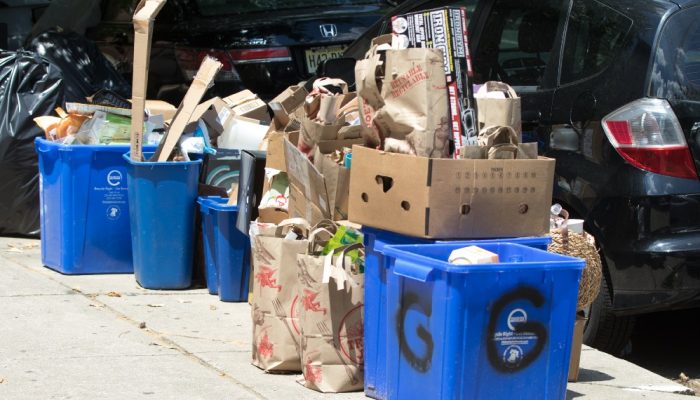Water bills can be confusing, so we’re here to break it down and help explain. A simple way to think about a water bill is to see that it comprises fixed and variable charges. Fixed charges stay the same every month. A variable cost comes from water usage and can change monthly.
Curious to know how the usage section of your water bill is determined? One quick answer: it is mostly based on monthly water meter readings. The transmitter on you water meter measures and tells the Philadelphia Water Department (PWD) the amount of water you use during a billing cycle.
This usage information is then sent to the Water Revenue Bureau (WRB), which, in turn, generates and sends you a bill. Customers with MyPhillyWaterBill accounts get monthly e-bills but can also request paper bills if they prefer. If you have not signed up for a MyPhillyWaterBill account, you will get printed bills in the mail. Your bill will also show fixed charges that don’t go up or down based on usage (we’re sharing more on that below).
What’s on your usage chart?
Customers are billed based on water used the previous month. For example, your current water bill is based on the water you used last month. The Water Revenue Bureau does not pre-bill customers for water usage.
Your current meter reading is deducted from the previous month’s reading to determine your exact usage. Meter readings happen about one month apart. You can find the current and previous months’ meter readings and the dates the readings were taken under your bill’s “Your Water Usage” section.
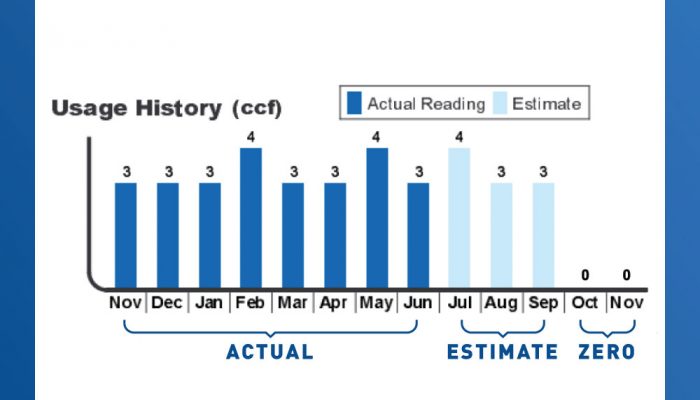
This section also contains a Usage History chart that tells you the type of meter reading performed during a given billing period. The chart shows two types of readings: an “Actual Reading,” which means the transmitter on your meter is functioning properly, and an “Estimated Reading,” which in most cases means that the transmitter isn’t successfully sending out information about your usage. Estimate reads can be inaccurate and may result in a higher bill or, in some cases, a credit for any overpayment.
You may also see “Zero Usage.” Unless you did not use water during the previous month, a zero usage read indicates that the transmitter on your water meter isn’t accurately reporting your usage or that your meter needs replacing. A bill with zero usage will only show a stormwater fee and service charges.
You should regularly check your bill for any of these red flags and contact the Water Department at (215) 685-6300 if you see anything other than an “Actual Reading.” Even if you get paperless bills, you should still check your bill often by logging into your MyPhillyWaterBill account and selecting the rectangular-shaped blue bottom that says “View bill” on your dashboard to access your actual bill.
Billing information
Your water bill contains three main charges: water, stormwater, and service. Unless there is a change in rates, the stormwater and service charges should stay the same month-to-month no matter how much water is used. Each charge supports the following tasks:
- The water charge helps the City treat our water before it gets to you. This money also helps maintain the water mains and pumping stations that deliver water to customers.
- The stormwater charge helps the City maintain its network of pipes and drains that carry stormwater to our rivers and water treatment plants. This also covers the costs of reducing stormwater and combined sewer overflow pollution entering our streams.
- The service charge covers operational costs, such as metering, pollution prevention, and billing and collection.
If you need help paying your water bill, please call (215) 685-6300 and ask about our customer assistance options or a standard water payment agreement.

